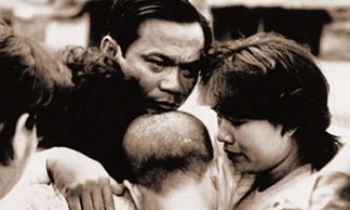CHICAGO (MarketWatch) -- While most major airlines are unable to convert their record passenger volume into profits, one below-the-radar segment of the industry is turning a handy profit: in-flight magazines.
Not only are most airline titles posting strong ad-revenue growth for their publishers, the category is handily outpacing most groups in the still-struggling magazine business.
And that growth is accelerating.
According to Publisher's Information Bureau figures, Southwest Airlines' (LUV: LUV16.01, +0.26, +1.7%) Spirit magazine posted a 41% jump in ad revenue to $29.5 million for January through September 2005 -- on top of an 18% gain the previous year. United Airlines' (UALAQ: UALAQ0.50, 0.00, 0.0%) Hemispheres was right on Spirit's tail, with a 36% bounce (vs. 26% in 2004). At US Airways (LCC: LCC24.68, +0.78, +3.3%) , which was just acquired by America West while in bankruptcy, Attache magazine posted a 31% increase, one year after logging a 26% growth rate.
AMR Corp.'s (AMR: AMR13.51, +0.63, +4.9%) American Way magazine, at 25%, may be the relative laggard of the group, but it's still the biggest earner by a hair, with revenue of $29.6 million taken in through the end of September.
By contrast, the average revenue growth for consumer magazines was less than 8%, and most mass circulation titles like Vanity Fair and Time either posted tiny percentage increases or fell.
"I think advertisers are realizing that airlines may not be doing that well but the planes are full," said Rick Morrison, president and publisher of American Airlines Publishing, which puts out not only American Way but also the higher-end Celebrated Living, the Spanish-language Nexxos -- and even Southwest's Spirit.
It's all about advertisers chasing a demographic. Added Morrison: "They know that we carry an affluent audience and that they are decision makers."
While its annual revenues are a tiny fraction of the $18.6 billion AMR hauled in last year, the company remains awash in red ink while the publishing arm turns a profit, Morrison said.
It also pays its own way: Even the cost of the fuel needed to fly those extra pounds of magazines around the world is charged back to the unit, an amount he said is "in the millions of dollars every year."
American is one of the only carriers that has an in-house magazine operations; the others are typically hire outside contractors, known as custom publishers. The names and brands remain the property of the airline while the publishing company pays a licensing fee and, usually, a cut of the take while covering production costs and keeping the bulk of the ad revenue.
Pace Communications, based in Greensboro, N.C., publishes magazines for Delta (DALRQ: DALRQ0.66, -0.05, -7.7%) , United and US Airways. Its combined monthly readership: nearly 7 million.
While smaller than monsters like TV Guide or Reader's Digest (RDA: RDA15.32, +0.23, +1.5%) , that is higher than either Vanity Fair or BusinessWeek and close to twice the monthly readership of Time Warner's (TWX: TWX17.83, +0.08, +0.5%) Fortune, according to MRI. The carriers that Pace serves handle roughly 22 million passengers per month -- a population the size of Texas.
And the demographics are an advertiser's dream. Delta, Northwest and United may all be in bankruptcy and the industry as a whole is expected lose north of $5 billion this year but most fliers are feeling little pain.
The median household income of Pace's readership is $106,731 -- higher than that of The Wall Street Journal or The New York Times and more than double the national average.
"At Hemispheres, we have the second-highest household income of any print audience in the country," said Craig Waller, chief marketing officer of Pace. "And we have them in a relatively uncluttered commercial environment which is increasingly hard to find."
Business at Pace is brisk, up about 10% in both pages and revenue this year, Waller said.
"We are not quite to pre-9/11 levels, but we are getting back there gradually," he said.
Waller believes that, along with the uptick in air travel, "increasing media fragmentation is doing us some favors" as it gets harder and harder for marketers to reach mass audiences through a single medium, be it a TV program, a radio show or a magazine.
In terms of advertising categories, the airline magazines rely heavily on other travel outfits (often mileage partner companies) like car-rental companies and hotel operators. Destinations are also big, particularly Las Vegas, as are restaurants, specialty electronics, business services and real estate developments in hot destinations.
Still, they have largely been frozen out most of by the biggest media-buying industries, like autos, food & beverage, pharmaceuticals and financial services.
Jack Hanrahan, director of U.S. print for media-buying agency OMD, a unit of Omnicom Group (OMC: OMC82.96, -1.31, -1.6%) , pointed out a few problems airline magazines face in attracting a wider variety of advertisers.
"They are just not thought of in the same context as magazines that people pay for," he said. "Plus, relatively speaking, it's a more expensive buy."
Nor have the magazines been so aggressive in seeking wider consumer business, he said. "They are just not that top of mind, and their sales representation is not that visible."
Pace's Waller said he has to constantly fight the perceptions, or even policy, held by many top ad spenders that "free distribution magazines are just not worth investing in."
The company did manage to lure in at least one top consumer name recently, he noted: Brown-Forman (BFB: BFB63.34, +0.68, +1.1%) , which bought a modest schedule in Sky to promote its Woodford Reserve bourbon.
And Waller said he expects more to follow.
"In 2006," he said, "our mission is to break into more of these categories."
William Spain is a reporter for MarketWatch in Chicago.









